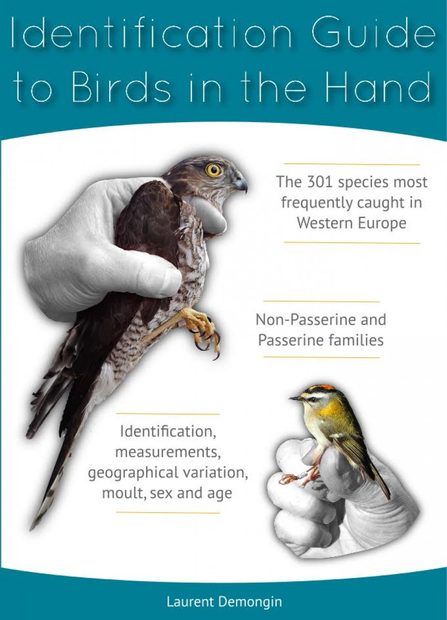About this book
Language: English
This English version of Guide d'Identification des Oiseaux en Main, updated with 51 extra species, gives all ornithologists who handle birds the essential information regarding accurate identification of species and subspecies, measurements, moult, sex and age.
The 301 species (154 non-passerines and 147 passerines) most frequently caught in Western Europe by general ringers are presented in detail. To avoid mistakes, identification is systematically compared with species of similar appearance, which represents a total of more than 550 treated species. Homogenous treatment of all species groups precludes the recurrent pitfalls of using various books with variable modes of presentation and means fewer books to carry.
Apart from 51 additional species, major improvements compared to the French version are:
- supplementary information in the introduction,
- addition of BTO codes and wing tip data in the heading of each species account,
- measurements of all treated species in the ‘identification’ section,
- the addition of schematic figures of moult sequences,
- addition of distribution range notes for all species,
- addition of EURING age codes in ‘moult’ and ‘age’ sections,
- improved organisation of figures clarifying them and becoming more comprehensive,
- addition of sonograms for some species (i.e. warblers...),
- addition of various informative figures and comparative illustrations,
- addition of bibliographic references at the end of each species account,
- different index marks for non-passerines and passerines,
- addition of appendix with a sample of moult and wing formula cards,
- and minor corrections and general updates to species accounts.
Customer Reviews (1)
-
very useful, needs editing.
By
Lars Ulrich
24 Nov 2022
Written for Paperback
In 2016 I bought "Demongin" and was very excited: now there was a sequel to "Svensson", which was very urgent, and by then 24 years had passed since "Svensson's" last edition.
Pretty soon I realized that it would be somewhat difficult for me to use "Demongin". I think the book needs a more manageable layout and I wish that the text was not so compressed on the pages, which could have been avoided if the book had been published in 2 volumes: Passeriformes and Non-Passeriformes.
After all, I think the book is a really good helper for determining the species, sex and age of the birds. I just need to arm myself with patience and not dwell too much on the past. After all, everything was easier and simpler in the good old days, when "Svensson" filled a quarter of what the last edition does. I wish Laurent Demongin the best of luck with the book and look forward to future editions.
3 of 4 found this helpful
-
Was this helpful to you? Yes No
Biography
Laurent Demongin has 25 years experience of working in ornithology. He has collaborated with various laboratories and institutes (Laboratory of Ornithology in Minsk Institute of Zoology, Chizé Centre of Biological Studies (CNRS), Emirates Centre for Wildlife Propagation, Max Planck Institute for Ornithology, University of Antwerp, University of Tromsö). Passionate about bird ringing, he got his ringing licence in 1998, and then participated in ringing activities in many countries (France, Belarus, Poland, Latvia, Lithuania, Spain, Israel [...] ).
Hervé Lelièvre, PhD, is an expert in fauna who has worked in various laboratories (Universities of Rennes and La Réunion, National Center for Scientific Research, National Museum of Natural History). Having considerable experience of writing reports and scientific articles in English, he conducted the translation of the book as rigorously as possible, to provide the reader with clear and comprehensive contents.
George Candelin has been a ringer for over 20 years and is currently employed as a Senior Research Assistant by RSPB and he has worked in ornithological research for BTO, RSPB and Oxford University. He has travelled extensively within Europe and been involved with ringing in Scotland, Wales, France, Spain, Gibraltar and Cyprus. He has also held a CRBPO ringing licence and has participated in the ACROLA project. His experience includes a diversity of species ranging from swans and waterfowl, to seabirds, waders, raptors, gulls, pigeons, owls, swifts, woodpeckers, cuckoos, bee-eaters and passerines.
















![Ageing & Sexing of Migratory East Asian Passerines [English / Chinese] Ageing & Sexing of Migratory East Asian Passerines [English / Chinese]](http://mediacdn.nhbs.com/jackets/jackets_resizer/25/250760.jpg)














![Ageing & Sexing of Migratory East Asian Passerines [English / Chinese]](http://mediacdn.nhbs.com/jackets/jackets_resizer_medium/25/250760.jpg?height=150&width=115)
